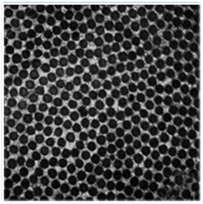Published online by Cambridge University Press: 10 December 2020

Nature has developed myriad ways for organisms to interact with their environment using light and electronic signals. Optical and electronic properties can be observed macroscopically by measuring light emission or electrical current, but are conferred at the molecular level by the arrangement of small biological molecules, specifically proteins. Here, we present a brief overview of the current uses of proteins for applications in optical and electronic materials. We provide the natural context for a range of light-emitting, light-receiving, and electronically conductive proteins, as well as demonstrate uses in biomaterials. Examples of how genetic engineering has been used to expand the range of functional properties of naturally occurring proteins are provided. We touch on how approaches to patterning and scaffolding optical and electronic proteins can be achieved using proteins with this inherent capability. While much research is still required to bring their use into the mainstream, optical and electronic proteins have the potential to create biomaterials with properties unmatched using conventional chemical synthesis.